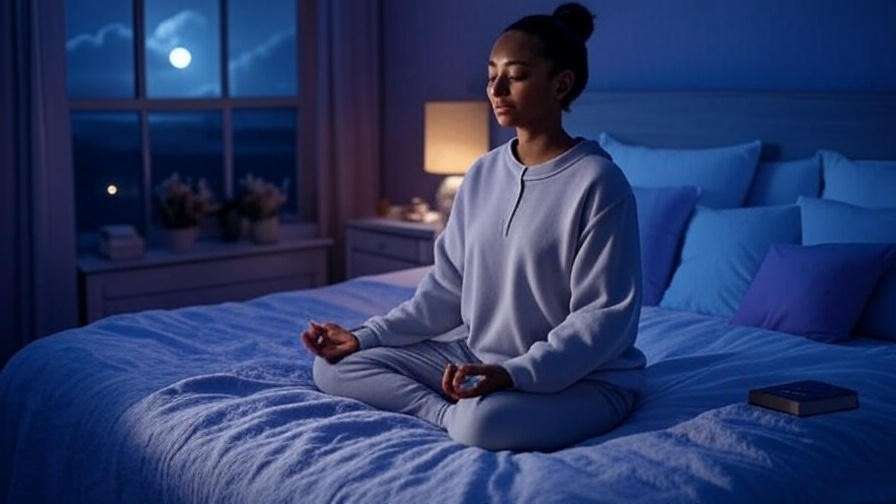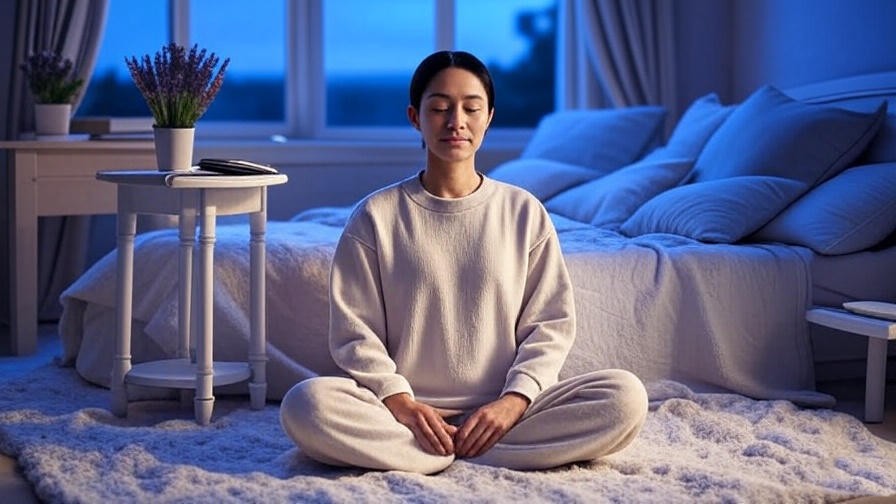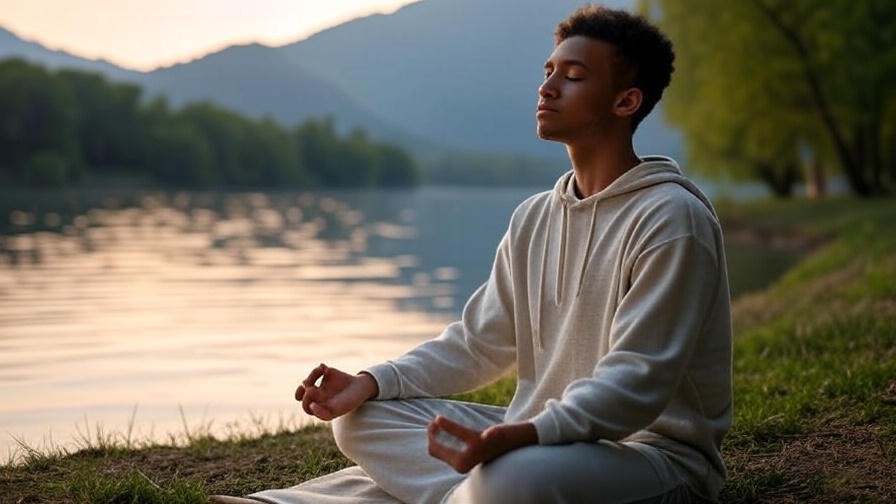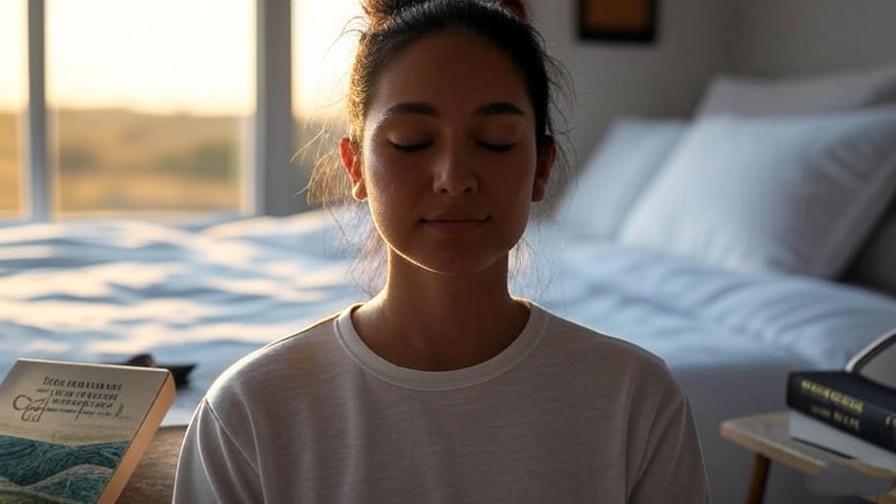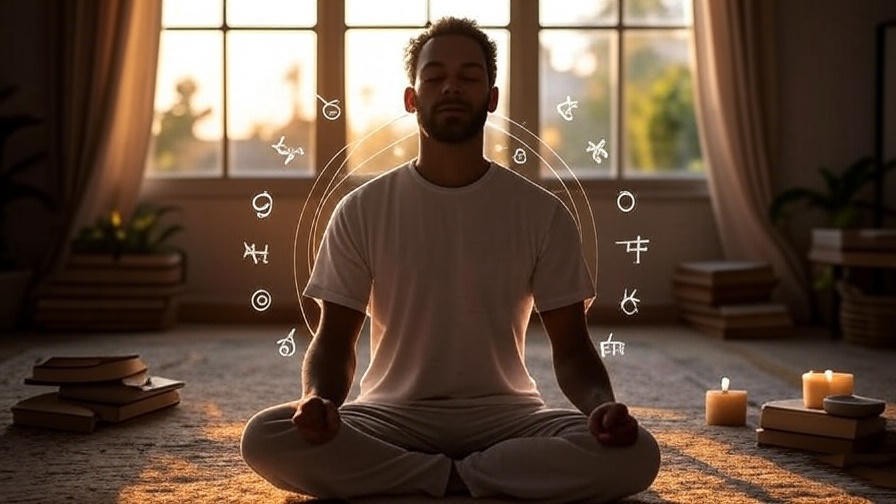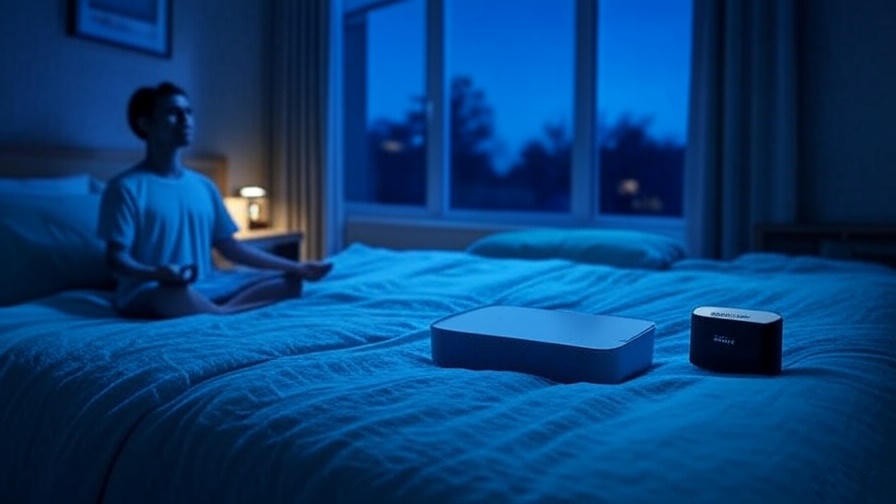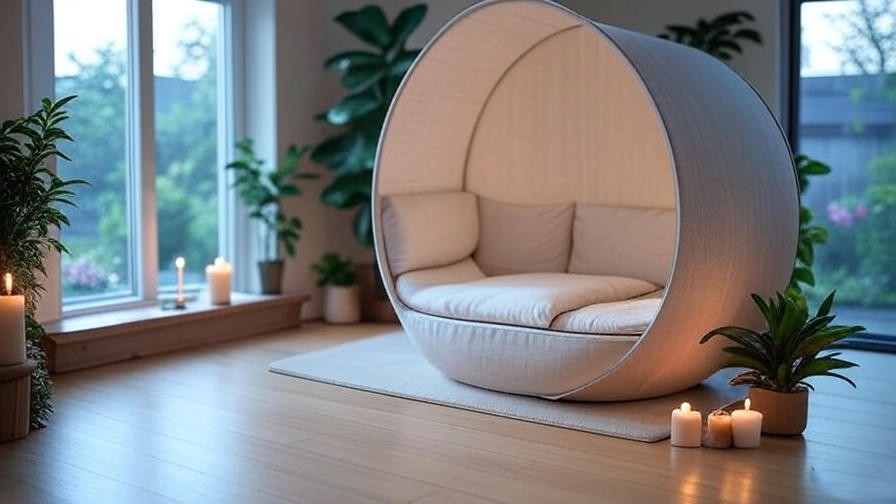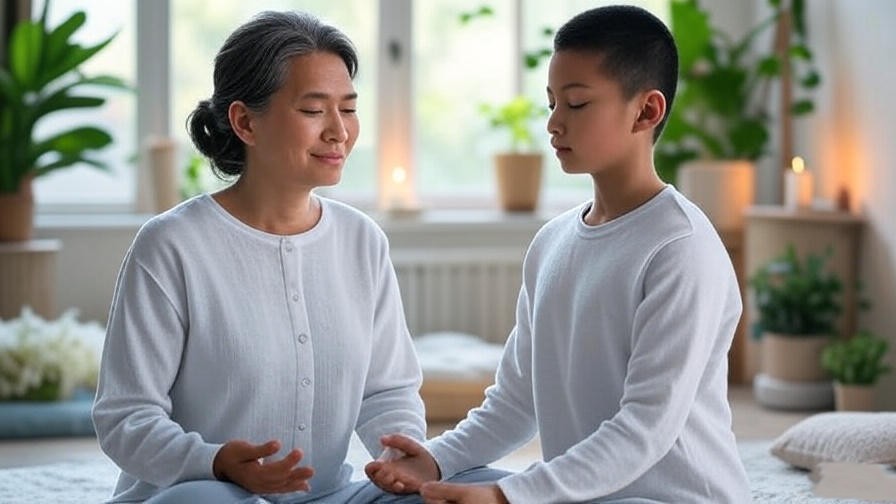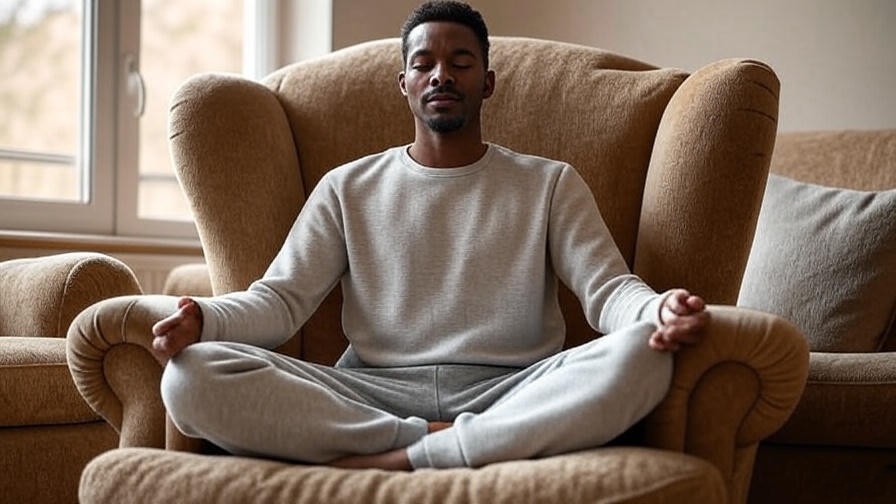Tossing and turning at 2 a.m., your mind racing with tomorrow’s to-do list—sound familiar? For millions, restful sleep feels like an elusive dream, leaving them drained and disconnected. Yet, the solution might be simpler than you think. By achieving deep sleep via calm meditation techniques, you can transform restless nights into rejuvenating rest. Sleep deprivation affects 1 in 3 adults, according to the CDC, impacting mental clarity, physical health, and emotional balance. This comprehensive guide, grounded in science and expert insights, will walk you through practical, beginner-friendly meditation techniques to unlock deep, restorative sleep and enhance your holistic well-being.
Why Deep Sleep Matters for Your Well-Being
The Science of Sleep and Its Role in Health

Sleep isn’t just downtime—it’s when your body and brain repair, recharge, and thrive. Deep sleep, the third stage of non-REM sleep, is particularly vital. During this phase, your body releases growth hormones for tissue repair, strengthens the immune system, and consolidates memories for sharper cognition. According to the National Sleep Foundation, adults need 7-9 hours of sleep nightly, with deep sleep comprising 13-23% of that time. Without it, you’re left vulnerable to stress, illness, and cognitive decline. Meditation, particularly calm-focused practices, enhances deep sleep by calming the nervous system, making it easier to slip into this restorative state.
The Consequences of Poor Sleep
Chronic sleep deprivation is more than just feeling groggy—it’s a health crisis. The American Academy of Sleep Medicine links poor sleep to increased risks of obesity, diabetes, heart disease, and depression. It also impairs focus, productivity, and emotional resilience. Consider Sarah, a 34-year-old teacher who struggled with insomnia for years. After adopting a nightly meditation practice, she reported fewer sick days, improved mood, and better classroom performance. Her story underscores a universal truth: quality sleep is the foundation of a vibrant life, and calm meditation can pave the way.
Why Meditation is a Game-Changer for Sleep
Meditation isn’t just for yogis or wellness gurus—it’s a scientifically validated tool for better sleep. A 2015 study published in JAMA Internal Medicine found that mindfulness meditation improved sleep quality in older adults with insomnia, reducing sleep latency (the time it takes to fall asleep) by up to 8 minutes. By lowering cortisol levels and quieting mental chatter, calm meditation techniques prepare your mind and body for rest. Unlike sleeping pills, meditation is natural, side-effect-free, and empowers you to take control of your sleep health.
Understanding Calm Meditation Techniques
What is Calm Meditation?
Calm meditation refers to practices designed to cultivate inner peace, reduce stress, and promote relaxation. Unlike active meditation (e.g., walking meditation) or transcendental meditation (which uses mantras), calm meditation focuses on stillness, mindfulness, and bodily awareness. It’s ideal for beginners because it requires no special equipment—just a quiet space and a few minutes. By practicing calm meditation, you train your mind to let go of worries, aligning perfectly with the goal of achieving deep sleep via calm techniques.
How Meditation Influences Sleep
Meditation works by activating the parasympathetic nervous system, often called the “rest and digest” system. This lowers heart rate, reduces blood pressure, and decreases cortisol, the stress hormone that keeps you awake. Dr. Herbert Benson, a pioneer in mind-body medicine, notes that meditation induces a “relaxation response,” counteracting the fight-or-flight state that fuels insomnia. For example, a body scan meditation, where you mentally focus on relaxing each part of your body, can reduce physical tension and mental hyperarousal, paving the way for deeper sleep.
Types of Calm Meditation for Sleep
Here are four calm meditation techniques tailored for sleep:
- Mindfulness Meditation: Focus on the present moment, observing thoughts without judgment. Example: Notice your breath’s rhythm for 5 minutes.
- Body Scan: Progressively relax each body part, from toes to head. Example: Spend 10 minutes mentally “scanning” and releasing tension.
- Guided Visualization: Imagine a peaceful scene, like a beach or forest. Example: Picture yourself floating on a calm lake under a starry sky.
- Breath-Focused Meditation: Concentrate on slow, deep breathing. Example: Inhale for 4 counts, hold for 4, exhale for 6.
Each technique is accessible and effective, with guided versions available via apps like Calm or Insight Timer.
Step-by-Step Guide to Achieving Deep Sleep via Calm Meditation
Step 1: Create a Sleep-Friendly Environment
Your bedroom sets the stage for restful sleep. Dim the lights 30 minutes before bed to signal your brain it’s time to wind down. Use blackout curtains to block external light, and consider a white noise machine to drown out distractions. Aromatherapy, like lavender essential oil, can enhance relaxation—studies show lavender reduces anxiety by 20% (Journal of Alternative and Complementary Medicine, 2013). Keep your room cool (60-67°F, per the National Sleep Foundation) and invest in comfortable bedding. A clutter-free space reinforces a calm mindset, priming you for meditation.
Step 2: Choose the Right Meditation Technique
Not all meditation techniques suit everyone, so experiment to find your fit. If you’re tense from a long day, try a body scan to release physical stress. If your mind races, mindfulness meditation can anchor your thoughts. Beginners may prefer guided visualization, as it’s engaging and structured. Here’s a quick comparison:
| Technique | Best For | Benefits |
|---|---|---|
| Mindfulness Meditation | Racing thoughts | Improves focus, reduces anxiety |
| Body Scan | Physical tension | Relaxes muscles, promotes calmness |
| Guided Visualization | Beginners, vivid imaginations | Creates mental peace, eases stress |
| Breath-Focused | Quick sessions, simplicity | Lowers heart rate, enhances relaxation |
Try one technique for a week to gauge its impact on your sleep.
Step 3: Practice Meditation Before Bed
Here’s a 15-minute pre-sleep meditation routine:
- Settle In: Sit or lie down in a quiet, comfortable spot. Dim the lights and silence your phone.
- Mindfulness Breathing (5 minutes): Close your eyes and focus on your breath. Inhale deeply through your nose for 4 counts, hold for 4, and exhale for 6. If your mind wanders, gently bring it back to your breath.
- Body Scan (10 minutes): Mentally scan your body from toes to head. Notice any tension and imagine it melting away with each exhale. Spend 30-60 seconds per body part.
- Close with Gratitude: Reflect on one thing you’re grateful for today to end on a positive note.
For convenience, download our free meditation script (link to PDF) or use a guided session on Calm or Headspace.
Step 4: Build a Consistent Nightly Routine
Consistency is key to reaping meditation’s sleep benefits. Pair your practice with a calming evening routine:
- 6:00 PM: Light dinner to avoid indigestion.
- 8:00 PM: Limit screen time; switch to a book or podcast.
- 9:30 PM: Gentle yoga or stretching (e.g., child’s pose, 5 minutes).
- 10:00 PM: 15-minute meditation session.
- 10:30 PM: Journal 1-2 sentences about your day to clear your mind.
- 10:45 PM: Lights out.
Stick to this schedule for 21 days to form a habit. Apps like Streaks can help you track progress.
Common Challenges and How to Overcome Them
Dealing with a Restless Mind
A racing mind is a common meditation hurdle. If thoughts intrude, acknowledge them without judgment and return to your focus (e.g., breath or body). Try a mantra like “calm” on each exhale to anchor your attention. Alternatively, progressive muscle relaxation—tensing and releasing muscle groups—can distract from mental chatter. A 2018 study in Sleep Medicine Reviews found this technique reduces sleep onset time by 15%.
Finding Time for Meditation
Busy schedules shouldn’t deter you. Micro-meditations (2-5 minutes) can fit into any day—try one during a lunch break or while brushing your teeth. Replace 10 minutes of evening scrolling with a body scan. If time remains tight, integrate mindfulness into daily tasks, like focusing on your breath while washing dishes.
Staying Motivated
Building a meditation habit takes patience. Track your progress in a sleep journal (download our free template) to note improvements in sleep quality or mood. Join an online meditation community, like Insight Timer’s forums, for support. Set small goals, like meditating 5 nights a week, and reward yourself with a relaxing treat, like a warm bath.
Common Challenges and How to Overcome Them (Continued)
For inspiration, consider Lisa, a 42-year-old nurse who struggled with insomnia due to shift work. After committing to 10-minute nightly body scans, she noticed falling asleep 20 minutes faster within two weeks. Her story highlights the power of persistence—small, consistent efforts yield big results.
The Science Behind Meditation and Sleep
Key Studies and Findings
The link between meditation and sleep is well-documented. A 2015 study in JAMA Internal Medicine followed 49 older adults with sleep issues. Those practicing mindfulness meditation fell asleep faster and reported better sleep quality compared to a control group, with effects lasting six months post-study. Another study from Harvard Medical School (2018) found that mindfulness-based stress reduction (MBSR) reduced insomnia severity by 32% in participants with chronic sleep problems. These findings confirm that calm meditation techniques rewire the brain for rest, reducing hyperarousal and promoting deeper sleep cycles.
Expert Insights
Dr. Matthew Walker, author of Why We Sleep, emphasizes meditation’s role in sleep health: “Mindfulness practices calm the amygdala, the brain’s stress center, allowing the body to transition smoothly into sleep.” Similarly, Dr. Sara Lazar, a neuroscientist at Harvard, notes that regular meditation increases gray matter in areas tied to emotional regulation, which helps quiet the mental noise that disrupts sleep. These expert perspectives underscore why calm meditation is a powerful, evidence-based tool for achieving deep sleep.
Long-Term Benefits of Meditation for Sleep
Beyond immediate sleep improvements, regular meditation reshapes your sleep architecture. A 2020 study in Sleep journal found that consistent meditators experienced longer deep sleep phases and fewer nighttime awakenings. Over time, this translates to better immune function, sharper focus, and reduced anxiety. Meditation also fosters resilience against stress, a common sleep disruptor. For example, participants in a 2019 mindfulness program reported a 25% drop in anxiety scores, correlating with improved sleep quality. By practicing calm meditation, you’re not just sleeping better—you’re investing in long-term well-being.
Tools and Resources to Enhance Your Practice
Recommended Apps and Tools
Technology can make meditation more accessible. Here are three top apps for sleep-focused meditation:
- Calm: Offers guided sleep meditations, sleep stories, and soothing soundscapes. Ideal for beginners. (Cost: $69.99/year, free trial available.)
- Insight Timer: Features thousands of free guided meditations, including body scans and breathwork tailored for sleep. (Cost: Free, premium option at $59.99/year.)
- Headspace: Provides sleep-specific courses and “wind-down” exercises. (Cost: $69.99/year, free trial available.)
For a budget-friendly option, explore YouTube channels like The Honest Guys or Michael Sealey for free guided sleep meditations. Our website also offers a free downloadable meditation script (link to PDF) to guide your practice.
Complementary Practices for Better Sleep

Pairing meditation with other holistic practices amplifies its benefits:
- Bedtime Yoga: Gentle poses like child’s pose or legs-up-the-wall relax the body. A 2017 study in Journal of Clinical Sleep Medicine found yoga improved sleep efficiency by 15%. Try this 5-minute sequence: cat-cow (1 minute), forward fold (2 minutes), and savasana (2 minutes).
- Journaling: Write 1-2 sentences about your day to offload worries. A 2018 study showed journaling reduced bedtime anxiety by 20%.
- Herbal Teas: Chamomile or valerian root tea promotes relaxation. A 2016 study found chamomile reduced insomnia symptoms in postpartum women.
Combine these with your meditation routine for a synergistic effect.
Tracking Your Progress

Monitoring your sleep improvements keeps you motivated. Wearable devices like Fitbit or Oura Ring track sleep stages, showing how meditation boosts deep sleep. Alternatively, use apps like Sleep Cycle for non-wearable tracking. Our free sleep journal template (link to download) lets you record meditation frequency, sleep duration, and mood. Track for 30 days to spot patterns—many users report falling asleep 10-15 minutes faster after two weeks of consistent meditation.
FAQs About Meditation and Sleep
How Long Does It Take to See Results from Meditation for Sleep?
Results vary, but studies suggest 2-4 weeks of daily practice yields noticeable improvements. A 2019 study in Behavioral Sleep Medicine found participants practicing mindfulness for 20 minutes daily reported better sleep quality after 14 days. Consistency is key—start with 5-10 minutes nightly and build from there.
Can I Meditate if I’m New to It?
Absolutely. Beginners can start with guided meditations, which provide step-by-step instructions. Apps like Calm offer 5-minute sessions designed for novices. Focus on your breath or use a simple body scan to ease into the practice. With time, meditation becomes as natural as brushing your teeth.
What if Meditation Doesn’t Work for Me?
If meditation feels challenging, try alternative relaxation techniques like progressive muscle relaxation or deep breathing exercises. A 2021 study found these methods reduced sleep onset time by 12%. If sleep issues persist, consult a sleep specialist to rule out underlying conditions like sleep apnea. Experiment with different meditation styles to find what resonates.
Is It Okay to Fall Asleep During Meditation?
Yes—it’s a sign your body is relaxing deeply. Sleep-focused meditations, like guided visualizations, are designed to blur the line between meditation and sleep. If you consistently fall asleep, try meditating sitting up or earlier in the evening to maintain awareness while still benefiting from relaxation.
Conclusion
Achieving deep sleep via calm meditation techniques is a game-changer for your health and happiness. By quieting the mind, reducing stress, and fostering relaxation, these practices transform restless nights into restorative slumber. Backed by science and expert insights, this guide offers practical steps to integrate meditation into your life, from creating a sleep-friendly environment to building a consistent routine. Start tonight with a 10-minute body scan or download our free meditation script (link to PDF) to kickstart your journey. Share this article with others struggling to sleep, and join the community of restful dreamers embracing calm for better well-being.

